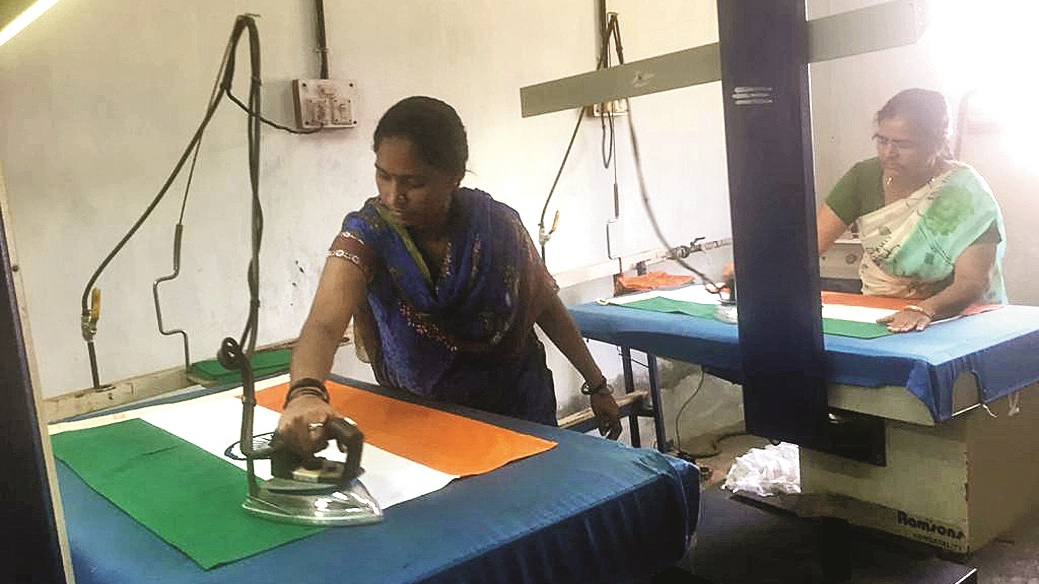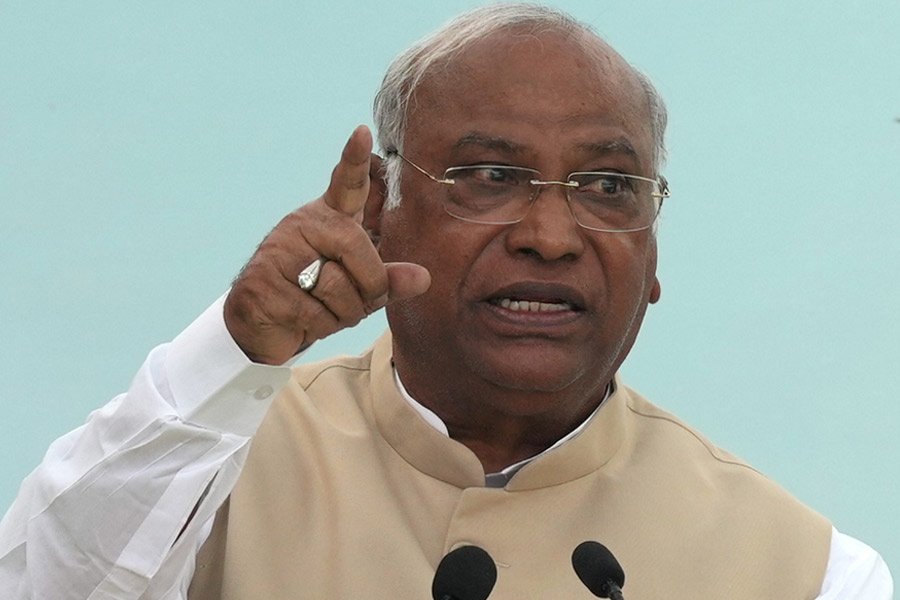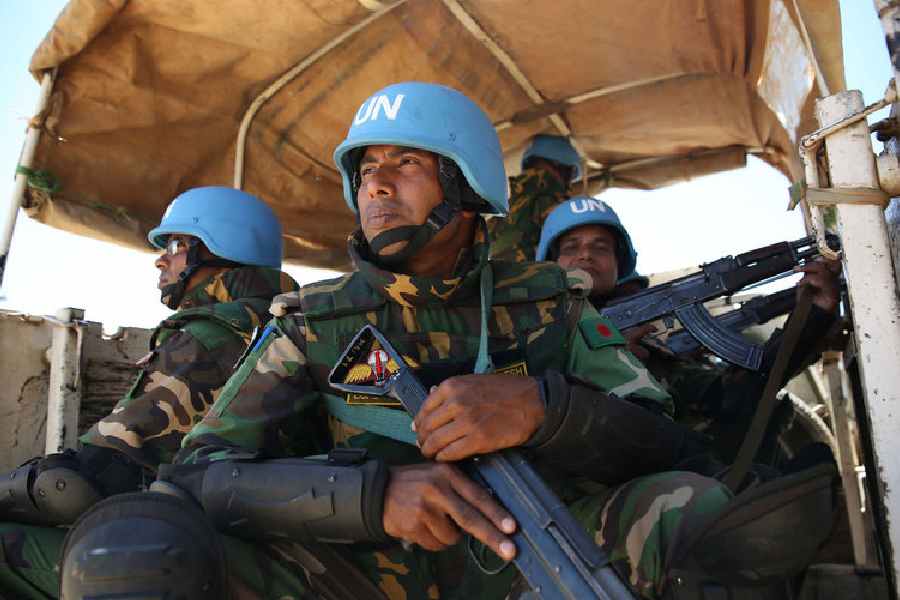It is difficult to say when in history but a piece of cloth came to be seen as the most important insignia of the honour of people. The Homo sapiens have been in existence for millions of years and have been using clothes made of leaves or animal skin. They fought wars and used colourful objects as war totems during prehistoric times. The ancient Indian word, ‘dhwaj’, and the Old Norse, ‘flaka’ (meaning to flicker or to flutter), have been in circulation for long. The Danish ‘Dannebrog’ is fabled to have fallen from the skies and has been in use for the last eight centuries. Yet, the national flag as a semiotic signature of a people is decidedly related to the idea of ‘a community of nations’, within which each nation is represented by a proudly fluttering piece of cloth — its national flag. Over the last two centuries, as nation after modern nation took birth, it was immediately draped in a national flag symbolizing its being. The Indian tricolour evolved during the freedom struggle and was formally adopted by the Constituent Assembly on July 22, 1947. One of the versions of the Indian tricolour had the charkha in the middle. That was the time when charkha and khadi were the main weapons of our freedom struggle. In fidelity to this historic origin of the tricolour, the official flags continue to be made of khadi. The Indian Bureau of Standards continues to regulate its precise dimensions, weave and the folding and stitching for its borders. Most Indians may not know this, but all of these are produced in north Karnataka. The khadi spun on thousands of hand-run charkhas at Tulasigeri village in Bagalkot is used by the Khadi Gramodyoga Samyukta Sangha in Hubballi for making India’s flag. This flag production centre supplies flags in various specified sizes, ranging from the largest — 21 x 14 feet — to the smallest — 6 x 4 inches. The one that we see fluttering proudly at the Red Fort is made at Hubballi.
The flag-making centre is a microcosm of the spirit of free India in many ways. Its founder, Venkatesh Magadi, was born on January 26, 1903, 47 years before India became a republic. The oldest among the workers at the centre, Nooranna, was born in 1947. He is one of the few men who work there. The workforce there is almost entirely made up of women, the real makers of India. All of us who are proud of India for its composite social weave will be happy to know that the women come from all communities: Muslims, Jains, Christians, Dalits, adivasis, Lingayats, Buddhist and Hindus. A Muslim, Noorjahan, working with a scheduled caste, Nayana, and a Christian, Janet, working with a Lingayat, Akkamma, mark the ethnography of the makers of India’s flag. The idea of India as envisioned by the makers of India can be seen nowhere else in such graphic reality as at this centre. As I conversed with these women, the famous line from a W.B. Yeats poem came to my mind: “How can you tell the dancer from the dance?” Speaking to them I said, “We all salute the national flag, the salute is also for you.” But, as I was saying this, I must confess, I could not hold my head high, for the plight of the flag-makers is worse than that of the most afflicted, most deprived of India. As they spoke about their life, many just could not hold back the tears in their eyes. They told me that when they work for eight to ten hours a day, they manage to earn about one hundred and fifty rupees. After producing flags for the country for decades, their monthly earnings have stayed the same — in most cases, a little under three thousand a month. They get neither the annual increments in wages nor have the possibility of pension. Paid maternity leave and LTA are words foreign to them.
The centre normally produces flags worth three to four crore rupees in a year. Covid-19 has brought down the sales to 30 per cent. The result is that the women have less work and their earnings have sunk. No pandemic-special relief has reached them. The coordinator of the centre told me that the government has not yet settled the payments it owes to the centre. The amount is in a mind-boggling multiple crores. I asked the women workers why they do not find another occupation? Their response would have left anyone humbled. “We love India. It is our service to the nation. And Gandhi had used khadi as a weapon against oppression. We are keeping it alive. Besides, Sir, tell us where are the jobs for us?”
The flag that went up high in the sky on January 26 this year was made by them — the Noorjahans, the Janets and the Akkammas of our land, working together for weeks at paltry wages a day. Some of them had their brothers and sons participating in a tractor march in Dharwad on that day in support of the farmers protesting outside Delhi. On the evening of January 26, so many television channels were busy informing the nation on how the national flag was dishonoured at the Red Fort. The veracity of those TV-tales is another matter. But, indeed, none of them had a thought to spare for the real makers of the flag. The shrill public proclamation of nationalism sounds so hollow when one notices how completely neglected the labourers that make India a nation are. The brand of nationalism that is currently on the block needs to know that a nation is primarily its people, its composite society, its vast population capable of love and sacrifice and not just a few mighty or super-rich individuals. The tricolour is our most sacred symbol. Every time I salute it, pride for India wells up in my heart. Yet, is that pride enough to conceal the pathos, suffering, agony, hunger and pain of those who toil in order to keep symbolism for the rest of India alive? In less than a week after January 26 came the national budget. It brought neither relief nor hope for the long-forgotten working hands. Long live India, the Mother India, whose fingers never tire of sewing, whose sight never fails while working at the bobbins and whose hands are not yet fatigued by folding and ironing the flags they make. Let us salute them, for the flag is theirs even if the budget is not.
The author is a literary scholar and cultural activist ganesh_devy@yahoo.com










